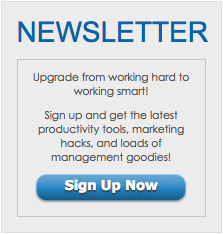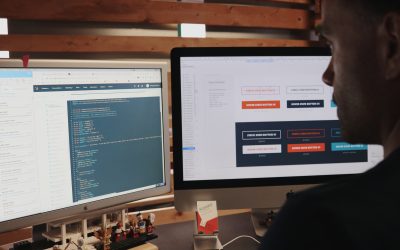UX Research Methods For Optimizing Conversions
Digital transformation transcends traditional modes and methods of relating products to customers. It originates or improves business culture and processes while addressing customer experiences throughout. Focusing on commercial roles such as marketing, customer service, and sales.
Speech-to-text conversions using UX research methods fast-track the way people interact with the technology. Transcription is time-consuming and tedious for the most part. User experience research methods investigate problems and solutions to existing tools.
Digital transformation transcends traditional modes and methods of relating products to customers by enhancing the user experience. Incorporating comprehensive Real User Monitoring (RUM) allows businesses to gather insightful data on user interactions, optimizing service delivery and end-user outcomes. This integration ensures that customer touchpoints remain intuitive and efficient, addressing performance issues swiftly for seamless digital transformations.
Free up your time and convert text to speech. Artificial Intelligence incorporates experimentation in providing a service. User experience research teams align AI technology with human satisfaction.
Without the customers, there is no product to market. Without products, there is no business. Let’s have a look at the various ways digital marketing can transform its development.
1. Humanize The Approach
Digital technology with AI to maximizes the quality of the end product. It does not intrinsically equate to an experience with a human touch. Even though the end user is always a person.
Companies are waking up to that fact every day. That the user experience is key from the design process, and all the way to the end. Which helps to secure a product, humans will love.
The following few tips can help the digital process enhance human interaction. Let us peek into how keeping people involved can help the process:
- Keep your focus on the customer past the initial stages and complete the cycle. Include them in the buying procedure and after they make a sale
- Share the history of your product with people. Allow them to connect with the cause of the brand
- Your human employees count in the human experience journey. Keep them satisfied to ensure an enjoyable passage for all
- Chart the customers’ journey and remodel or convert where necessary
- The former point speaks to the information gathered from the users. It must be with the core purpose of finding solutions where they need the application
After all, the desired outcomes and objectives set in the field of User Experience (UX) design, are to create products or services that effectively meet customers’ needs and expectations. These goals are crucial in shaping the design process and ensuring that the final user experience is positive, intuitive, and efficient. UX goals often include aspects such as improving usability, accessibility, visual appeal, and overall satisfaction. Ultimately, the user experience goals are a cornerstone in achieving user-centered and successful design outcomes.
2. Understand The landscape
Management systems are cardinal to the user-centric process of digital transformation. We have entered a profound era in production. Thus we need need to take the required steps toward a successful culmination
Digital transformation targets one and all on an unprecedented scale. Welcome to the industry 4 point 0. In case you don’t know what the meaning of that is: it is the movement of automation, information trade, production technologies, Cyber-physical systems (CPS), IoT (internet of things), cloud computing, and the creation of the smart factory. The evolution of life as we know it.
All these need to include a sustainable operation. With the engagement of people at the forefront. While only addressing the necessity of products in a cost-effective manner. Thus the importance of understanding the landscape.
3. Define The Product
What are you selling and why is it needed by people? These are pertinent questions to help you navigate the journey. In some cases hiring a virtual assistant is the solution you may need.
Product management is key to any expedition. First, you need to find out what kind of product you are remarketing. Is it physical or virtual? In both cases, it is inevitable that digital marketing will play a role.
Physical goods are tangible. Such as durable (cars, computers, appliances) and non-durable (food and drink) merchandise. Virtual goods are not. As the name suggests.
These are services like project management, software, banking, education, health, and so on. To extend services, companies tend to use hybrid products. This means the combination of physical and virtual brands or devices.
4. Never Stop Learning
One of the benefits of upskilling your employees is that it builds morale. Nothing beats a happy team that feels valued and appreciated. It also creates a competitive advantage in ever-evolving business culture.
Investing in improving your workers’ skillsets is cheaper than hiring new staff. The ita Group estimates that a workforce of 100 employees with an average salary of $50,000 can have replacement costs that come up to $660,000 to $2.6 million in one year.
More benefits to upskilling your workforce include:
- Keep your staff: It saves the company time and money
- Create a sense of purpose: workers who see a future in the company they work for are happier
- When employees are happy they offer quality service: excellent service invites repeat customers
- Build brand advocates: people always feel the need to share pleasant experiences
Understand the weak points in your workforce before you go ahead and upskill. The aim is to stay on top of the game and beat your competitors. Turning it into more of an investment than an expenditure.
5. Apply A Transformation Strategy
A digital transformation strategy is about strategy and has almost nothing to do with digital technology. It speaks to the broad aspect of business management processes. It’s about creating a roadmap for long and short-term business outcomes.
To achieve measurable goals, dynamic structures, and coordinated workflows. 7 principles to creating a conducive strategy are as follows:
- Understand the necessity for digital transformation
- Equip the business for culture conversion
- Don’t rush the process and start small
- Plan your technology implementation
- Look for partners and other experts to guide your journey
- Assemble feedback and polish where it’s needed
All you need is a plan that is comprehensive. One that uses digital solutions to enhance physical business aspects, then you’re good to go. These aspects cover all the elements from engineering, manufacturing, sales, and beyond. “Failing to plan, is planning to fail” -Benjamin Franklin
6. Use A Transformation Framework
The transformation framework is an outline of how an establishment tackles phases of change. Considering that change is constant as business culture evolves. It is a tool that steers across all levels and departments.
Many organizations make the mistake of assuming that a digital framework is a once and for all time plan. Frameworks need an appraisal on a regular basis. At least as regular as the change.
The Oxford dictionary definition of holistic is an adjective, and philosophy:” characterized by the belief that the parts of something are intimately interconnected and explicable only by reference to the whole”. A holistic approach to digital transformation takes on the same meaning in that it suggests the following:
- It is a design with enduring and complementary processes
- It must take on an accessible role to ease ongoing procedures
- Include essential roles to drive the transformation forward
An adequate digital transformation framework responds to changes in business culture. Innovation is at the core of its principles. Thus determining value in its start and enterprise.
7. Run Experiments
With any launch of a brand or a product, prior experimentation avoids disappointment. Utilizing a UX testing platform assists in ironing out any issues that may cause glitches in the long run. Using people in those experiments is best when the product they are testing is for their benefit.
Existing experiment methods
User experience methods vary in scale and form.
Common UX experiments:
Following is a list of the most common UX design methods and techniques.
- Accessibility Audit-Ensures that users from all backgrounds can access products without limitations
- Swot Analysis-Looks at strong and weak points and builds from there
- Eye Movement Tracking-It picks up on a user’s body language and emotional reactions by registering eye movement
- Field Study-Takes place where the product is, to monitor user behavior
- Guerilla Testing-Asking relevant people in public spaces for their opinion
- A/B Testing-Offers alternatives to the product to analyze reactions
- Hypothesis Testing-Sharing an estimation and expressing the value of a product
- Usability testing-Carrying out the task of a product by one or a group of people
- Card sorting-Compartmentalizing content to model information outlines
- Focus groups-A group of people discussing a product under the supervision of a moderator
- Product Roadmap-A guideline with evolutionary forecasts and contingency plans
- Task Analysis-Research evaluating tasks necessary to complete a mission
- Brainstorming-Teams gather and discuss solutions to outlined issues
- Heuristic Evaluation-It examines the good and bad sides of a product, similar to a swot analysis
- Kickoff Meeting-Probes all the roles involved in carrying out a product
- Consumer Interview-Helps navigate emotional and qualitative information from the use of a product
- Associate Interview-Involves all stakeholders, from partners to customers and employees
- Cultural Probes-A source of inspiration for product designers based on demographic research
- Dynamic Analysis-Comparing competitor products to achieve a higher advantage
- Merchandise Policy-Examines a product’s foundation, life cycle, and future plans
- Service Approach-An outline for the team working on a product
“Digital transformation is a fundamental reality for businesses today.”- Warren Buffett, an investor and renowned business tycoon
Developing user-centric approaches to digital transformation is a deep procedure. That is why it has to be in a timeous manner without a rush to reach an end goal. The main key is to focus on what will keep your company going through the evolution of business culture.
Author Bio:
Li-Anne Mcgregor van Aardt is a wordsmith who has written everything from editorials, blogs, and press releases, to poetry and rap songs, to a South African travel book, which she magically knocked out in 24 hours. Painting the world with her words is something Li-Anne has been doing for the past 16-plus years. Expect deep hues and careening colors of various vibrancy when traipsing her cascade of words.





